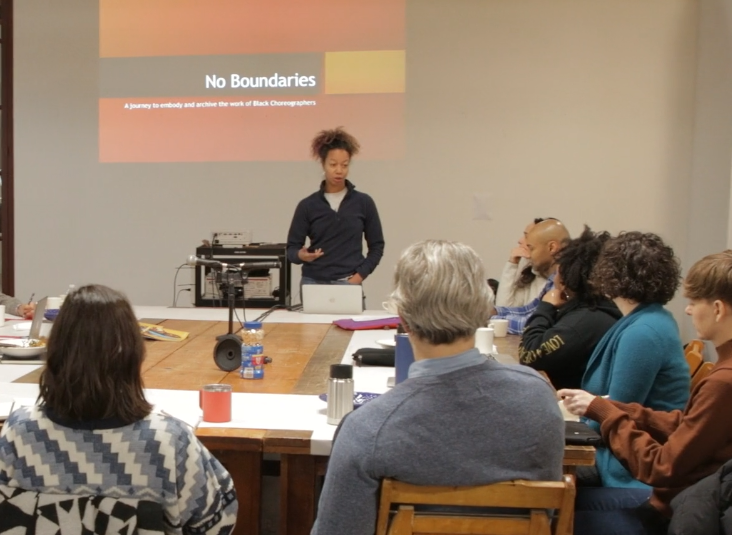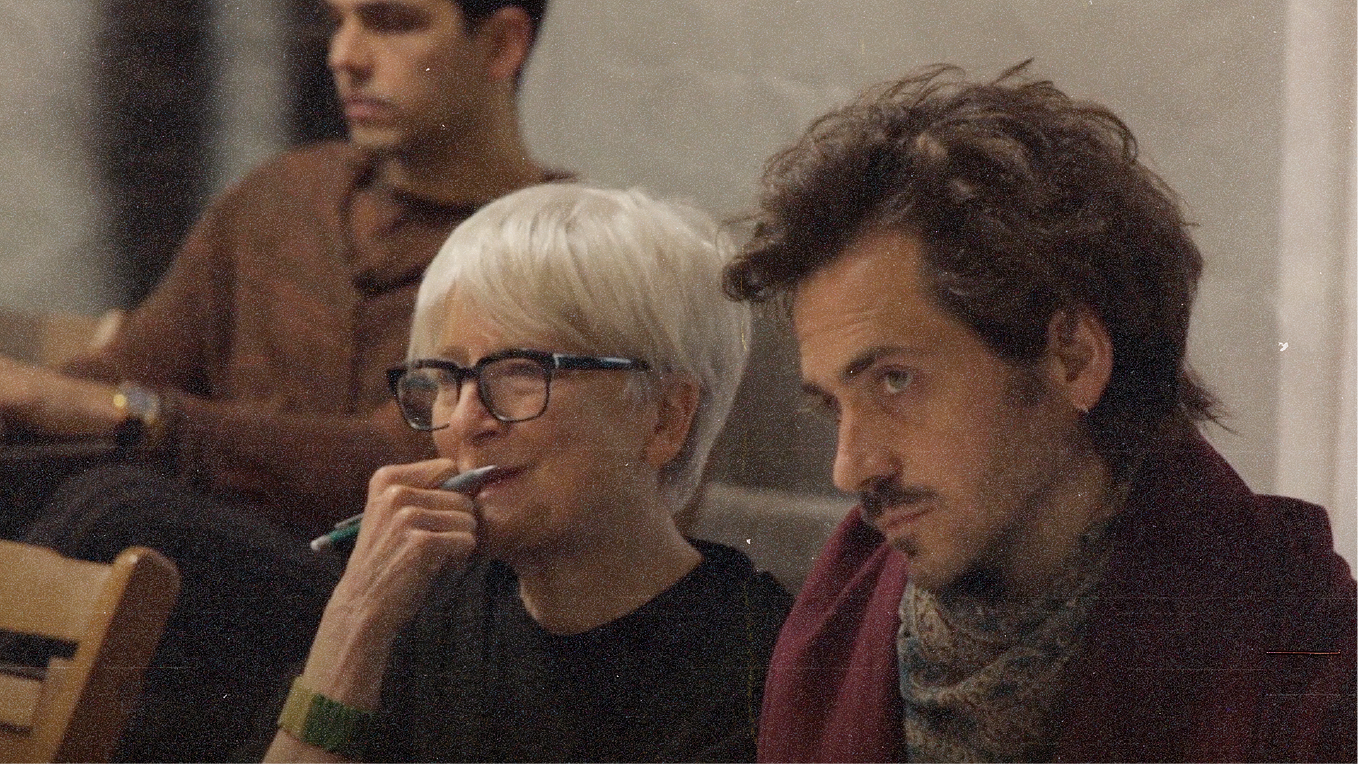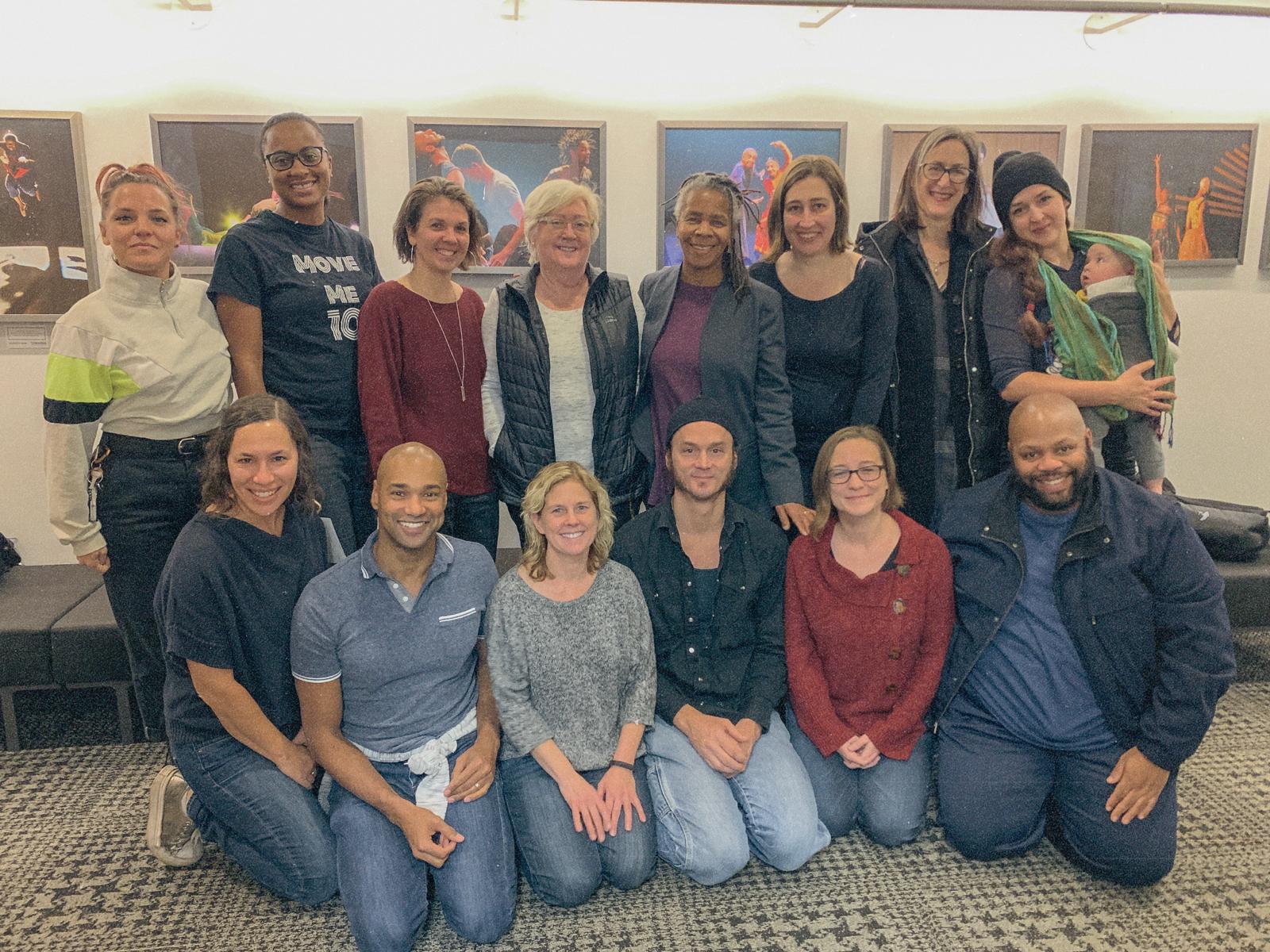/////////////SCROLL RIGHT
AUDIO INTRO
Why it matters. Why the perspective of originating artists matters, is at the heart of all of the Vault convenings. The relevance of an artist driven archive depends on the performers and collaborators it serves, the audience it informs, as well as the legacy it may preserve. The discoveries made through artists' creative processes reveal a point of view that may not be captured in any other archival method.
WHY IT MATTERS

Angie Hauser, Jacob’s Pillow:
Some of my favorite art has happened in the room with other art makers in a rehearsal, in a process situation. And that perhaps a performance is an archive of that…
VideoJudy Hussie-Taylor, NYC:
Which brings up the “who,” who do you want to reach? During [Danspace Project’s] Lost & Found organizing meetings, we all felt such urgency. For me that platform was about that 17-year-old who found their way to one event and thought, “Oh, there’s a community of like minds?” I was at the Walker [Art Center], a mini-convening, showing Eiko’s work and Ishmael’s Lost & Found, someone asked about audiences and I said “this 17-year-old…” Olga Visu said at the White House [in 2015 when Ralph Lemon received the Medal of the Arts from President Obama], Ralph had never met Philip Glass. Glass said “I was at the Walker in the 70’s and there were only five people in the room, and I thought I’d never be invited back. And Ralph said “I was a 17-year-old in that room.” So, it got me thinking about audience on the seventh generation level.
Ann Carlson:
I assume that there is a much larger audience/spectatorship for works that are mediated for viewing on a personal computer.
Jaamil Olawale Kosoko, Jacob’s Pillow:
What's the criticality behind what my offering is? With that comes a kind of cultural diplomacy, or ambassadorship.
Video
Presentation: NO BOUNDARIES—Gesel Mason
- Legacy, representation
- Where and how the black dancing body appears and disappears in digital space
- Who gets to tell what stories?
- Real and imagined concerns around ownership, intellectual property, copyright, permission, and transmission
Betsey Brock, Seattle:
Is it artists’ or institutions’ responsibility to archive? What gets archived, and for whom? …Who is the audience, does the institution On the Boards get to decide? Are we beholden to the artists or to future generations, or ourself, or all of the above?
Angie Hauser, Jacob’s Pillow:
…to participate in a conversation around archiving and to build process around archives—to align [archives] with how dance is actually made.
Jaamil Olawale Kosoko, Jacob’s Pillow:
…So how do you go about overcoming harsh review, especially if it's completely inaccurate?

Russell Lepley:
We need clear and simply shot video…
Mara Frazier:
I assume that audiences have viewed at least a sample of a choreographer’s work before they buy a ticket.
Jonathan Meyer:
…I would say that the work fails when it’s not live.
Claudia La Rocco:
I try to assume nothing about “audience."
Ishmael Houston-Jones:
WritingIn 2017, I find myself in my mid-60s and thinking much more about legacy. My own legacy and the legacy of my peers. Sadly, this was provoked by the recent deaths of several of those peers and my meditations led me to contemplate how will their (and my) contributions to this particular and peculiar subset of this art form, experimental dance, be remembered. Who will be able to access the archive of lifetimes of work? How will this archive be available? Formats and gatekeepers, what and who will they be, and do we have any control over either?
So, do I want just anyone to have access to all of my work? Now? When I’m no longer here? I keep thinking that there is no parallel in writing. One writes a book and anyone can read it if they buy it or it is available in a library or online. Recorded music is much the same? There is a handful of exceptionally good writers writing on the subject of experimental dance. Is there some reason that there aren’t more efficient methods of archiving and disseminating our work to a greater public other than oblivious reviews or by YouTube and Vimeo?

/////////////////////////////////////
Columbus Post-It Wall of Questions:
How can we incentivize archival behavior broadly?
What does a fieldwide funding strategy look like?
Digital archive...where the form has a relationship to embodied practices…
...Anti-racist methods of dissemination, whether online or in digital space…
How might an archive be thought of as...dimensional?
How can we prevent experimental and obscure performance practices from erasure…?
Is there a better way to name an archive?
What is the relationship between archiving and stewardship?




